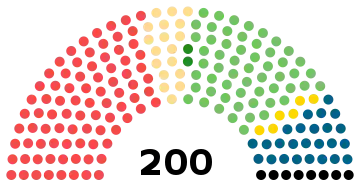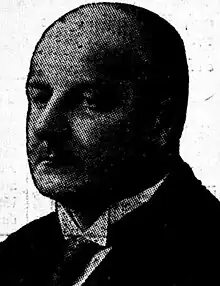| |||||||||||||||||||||||||||||||||||||||||||||||||||||||||||||||||||||||||||||||||||||||||||||||||||||||||
All 200 seats in the Parliament of Finland 101 seats needed for a majority | |||||||||||||||||||||||||||||||||||||||||||||||||||||||||||||||||||||||||||||||||||||||||||||||||||||||||
|---|---|---|---|---|---|---|---|---|---|---|---|---|---|---|---|---|---|---|---|---|---|---|---|---|---|---|---|---|---|---|---|---|---|---|---|---|---|---|---|---|---|---|---|---|---|---|---|---|---|---|---|---|---|---|---|---|---|---|---|---|---|---|---|---|---|---|---|---|---|---|---|---|---|---|---|---|---|---|---|---|---|---|---|---|---|---|---|---|---|---|---|---|---|---|---|---|---|---|---|---|---|---|---|---|---|
| |||||||||||||||||||||||||||||||||||||||||||||||||||||||||||||||||||||||||||||||||||||||||||||||||||||||||
| |||||||||||||||||||||||||||||||||||||||||||||||||||||||||||||||||||||||||||||||||||||||||||||||||||||||||
 |
|---|
Parliamentary elections were held in Finland on 1 and 2 July 1939.[1] Following the elections, the National Progressive Party-led government of Aimo Cajander continued in office. However, he was replaced by Risto Ryti's Progressive-led war government in December 1939.
Background
The leading issues were the distribution of the growing prosperity's benefits, the prospects for the centre-left coalition government's continuation, the right-wing opposition's criticism of the government's numerous and allegedly poorly prepared legislative proposals, and the Finnish national security under the threat of World War II. Prime Minister Cajander opposed the notable increase of defence spending before the elections, because that would require raising taxes. Finance Minister Väinö Tanner and Governor of the Bank of Finland, Risto Ryti, opposed the taking of a foreign loan to buy modern military equipment for the Finnish army, although the Finnish national debt in 1939 was among the lowest in the Western world. Most Finnish voters were apparently satisfied with the centre-left Cajander government's performance, because it received almost three-quarters of the seats. The voter turnout was the highest of the Finnish parliamentary elections of the 1920s and 1930s.[2][3][4]
Results
 | |||||
|---|---|---|---|---|---|
| Party | Votes | % | Seats | +/– | |
| Social Democratic Party | 515,980 | 39.77 | 85 | +2 | |
| Agrarian League | 296,529 | 22.86 | 56 | +3 | |
| National Coalition Party | 176,215 | 13.58 | 25 | +5 | |
| Swedish People's Party | 124,720 | 9.61 | 18 | –3 | |
| Patriotic People's Movement | 86,219 | 6.65 | 8 | –6 | |
| National Progressive Party | 62,387 | 4.81 | 6 | –1 | |
| Party of Smallholders and Rural People | 27,783 | 2.14 | 2 | 0 | |
| Swedish Left | 5,980 | 0.46 | 0 | 0 | |
| Others | 1,506 | 0.12 | 0 | – | |
| Total | 1,297,319 | 100.00 | 200 | 0 | |
| Valid votes | 1,297,319 | 99.61 | |||
| Invalid/blank votes | 5,029 | 0.39 | |||
| Total votes | 1,302,348 | 100.00 | |||
| Registered voters/turnout | 1,956,807 | 66.55 | |||
| Source: Tilastokeskus 2004[5] | |||||
References
- ↑ Nohlen, D & Stöver, P (2010) Elections in Europe: A data handbook, p606 ISBN 978-3-8329-5609-7
- ↑ Seppo Zetterberg et al., eds., A Small Giant of the Finnish History / Suomen historian pikkujättiläinen, Helsinki: WSOY, 2003
- ↑ Sakari Virkkunen, Finland's Presidents I / Suomen presidentit I, Helsinki: WSOY, 1994
- ↑ Martti Turtola, Risto Ryti: A Life for the Fatherland / Elämä isänmaan puolesta, Helsinki: Otava, 1994
- ↑ Tiedosto "595. Eduskuntavaalit 1927–2003 (Tilastokeskus 2004)

.jpg.webp)
.jpg.webp)
.jpg.webp)
.jpg.webp)
.jpg.webp)